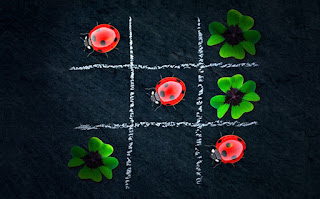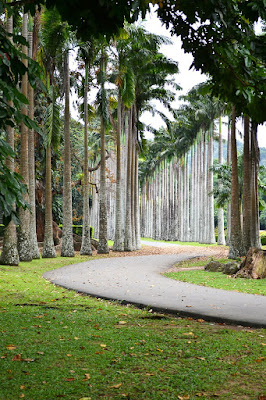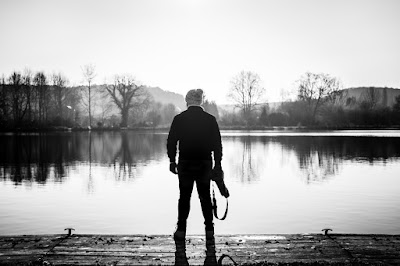Whether you’re on a hike, vacation or casually exploring the earth around you, presumably you’ll want to document your journeys with photographs. The key to improving those images doesn’t necessarily accompany a rich camera or fancy equipment. The primary factor is YOU, and therefore the way you compose those shots.
Thanks to current improvements in photography, stunning landscape photography are often crazy just a smartphone. It all depends on ensuring a satisfying composition, which entails the methods you decide to use so on regulate the movement of the viewer’s eyes within the photograph.
Here are my top tips for improving your Landscape Photography.
Table of Contents:-
• Landscape Photography Tips &
Tricks
• Landscape Photography Tutorials
• Landscape Photography Types
• Landscape Photography Ideas
• Landscape Photography Camera
Setting
• Landscape Photography Camera Lenses
This basic “rule” of photography will allow you to form more eye-catching photos. Imagine dividing your landscape into two evenly spaced vertical lines and two equally spaced horizontal lines - kind of a tic-tac-toe diagram. Compose the foremost important element —whether it is a mountain, a person, the sun, etc. — on one of the four points where the lines connected. The result is that your photos are getting to be much more balanced and pleasing to the eye. • Landscape Photography Camera Lenses
Use the Rule of Thirds
In addition, try placing the horizon of a landscape on one of the two horizontal lines, instead of being centered within the photo. In case the sky is dramatic, place the horizon on the lower line. If the foreground seems to be more interesting, just compose the horizon on the upper line.
Create depth
To add a three-dimensional aspect to your photo you'll need to create depth. An honest technique is to hunt out items within the foreground to strengthen your shot. If you are taking an image of a far-off mountain, things like rocks, trees and flowers within the foreground will give perspective. To accomplish this, never shoot at eye level. Make sure low down to include those interesting elements into your photo composition.Use leading lines and diagonal lines
Our eyes naturally follow linear images. Find lines to compose this will draw your viewer more into the photograph. You’ll also use them to point to the foremost important element of the shot. These lines could even be either straight or curved like paths, fences, streams, bridges, shorelines, railroad tracks, and even features like trees and striations in rocks. Incorporate them into your shots, and if within the least possible, have them lead toward your main subject or converge to a vanishing point.
Look for symmetry
Symmetrical images are very pleasing to the eye. This is often sometimes hard to hunt out during a landscape, but they're doing exist from time to time. When composing a symmetrical shot it always means breaking the “Rule of Thirds,” and placing your subject within the middle of the scene. All of my most favorite images of this type were taken as seascapes, trees, stones or other man-made structures or monuments.Keep it simple
As a beginner photographer, seek out simple landscapes without plenty of clutter. Because the complexity of an image grows, the harder it becomes to put emphasis on your subject. I find it helpful to concentrate or crop the image down when a scene is overly complex. Always ask yourself what you'll skip off the image, not what you'll include. Also search for consistent textures or patterns to strengthen and simplify your shot, sort of a grassy field, or ripples within the sand along a beach.Utilize Natural Framing
Frames keep our attention inside the photograph and may isolate our subject from what’s around it. You’ll often enhance framing by using natural elements like trees, rock arches, and overhanging foliage on the edges of your shot.Timing is everything
When possible, shoot during the “golden hours,” which is that the hour after sunrise or the hour before sunset. This might provide an image that's less “washed-out,” allowing the colors to be more vibrant, and thus the image textures to be more defined and clear. Low-light shots also will provide warmth to your photo. Another little trick is to shoot right before or immediately following a storm when clouds are often at their most dramatic.These landscapes Photography composition tips should be superb because of improving your images, but sometimes those “rules” are meant to be broken. Take many shots, experiment with different techniques, and most importantly … create your own style.
Landscape Photography Camera Setting
Metering Mode: Evaluative
Drive Mode: Single-shot
Shooting Mode: Aperture Priority
Aperture: f/11 to f/16
ISO Setting: 100 to 200
Focus Mode: Single Shot
Auto-Focus Point: Single auto-focus point
Focal Length: 24mm to 35mm
Image Stabilization: shutter speed dips below 1/30 of a second suggestible
Metering Mode: Evaluative
Best Landscape Photography Camera Lenses
Canon EF 24-70mm f/2.8L II USM Lens.
Canon EF-S 10-18mm f/4.5-5.6 IS STM Lens.
Canon EF 100-400mm f/4.5-5.6L IS II USM Lens.
Nikon 50mm f/1.8G.
Nikon 14-24 f/2.8 ED.
Nikon 24-70mm f/2.8 ED AF-S.
Nikon 24-120mm f/4g ED VR.
Landscape Photography involves lots of difficulties to shoot but its a fun to shoot nature at its best. If you are passionate about photography and if you love nature then you can create magical moments of nature. So what are you waiting for, go out and try all tricks of Improving Your Landscape Photography | Tips & Tricks | Landscape Photography Camera Setting | Lenses and explore your passion you will definitely amazed to see your result.
Thanks for Reading.
.









Please let me know if you have any questions ConversionConversion EmoticonEmoticon